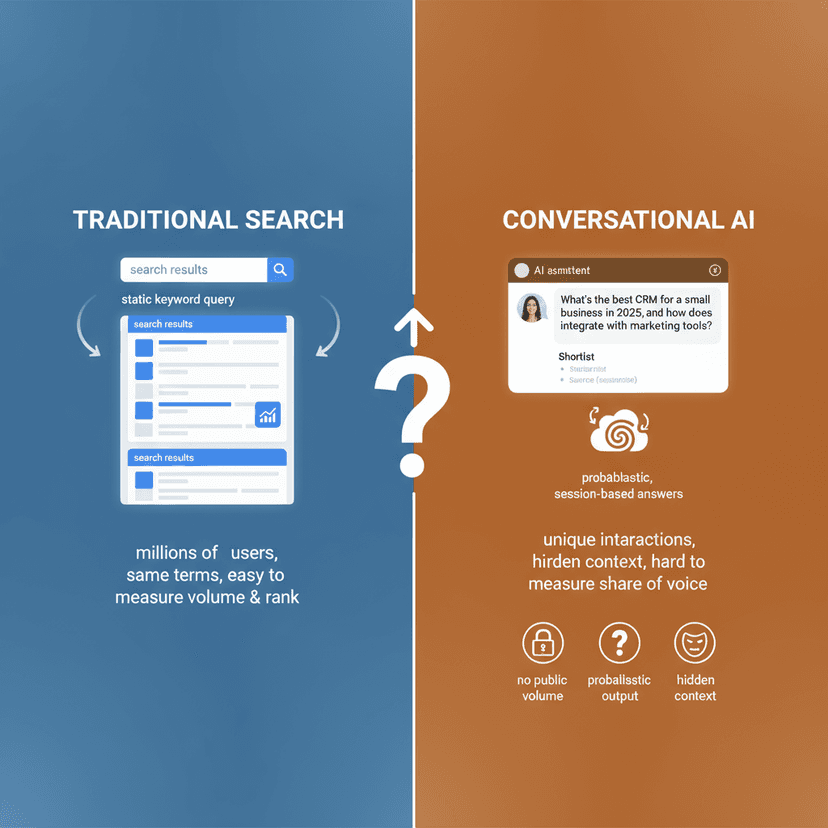Introduction
Google has officially begun rolling out its June 2025 core update, marking another significant shift in the search landscape that webmasters, SEO professionals, and content creators need to be aware of. Announced on June 30, 2025, this core update represents Google’s ongoing commitment to improving search results quality and relevance for users worldwide. As with previous core updates, this rollout is expected to cause ranking fluctuations across websites in various niches and industries as Google refines how it evaluates and positions content in search results.
Core updates typically bring widespread changes to Google’s ranking algorithms rather than targeting specific issues or content types. The June 2025 core update continues this tradition and may significantly impact your website’s visibility in search results over the coming weeks. This article provides a comprehensive overview of what we know about the update, what to expect, and how to navigate the changes effectively.
What Is the June 2025 Core Update?
The June 2025 core update is Google’s latest broad change to its search ranking algorithms. Unlike more targeted updates focused on specific issues like spam or product reviews, core updates involve comprehensive adjustments to how Google evaluates content quality and relevance. These updates typically happen several times throughout the year and are part of Google’s continuous effort to improve search results.
Google’s official announcement confirms that this update began rolling out on June 30, 2025, at approximately 7:34 AM PDT. As noted on Google’s Search Status Dashboard, the complete rollout process could take up to three weeks, meaning we might see the full effects continuing through late July.
Core updates like this one aim to better align search results with Google’s evolving understanding of quality content. Rather than penalizing specific violations or issues, these updates recalibrate how Google’s systems assess content value overall. This means that even websites that haven’t made any recent changes might see significant shifts in their search visibility.
Timeline and Rollout Details
The June 2025 core update officially began its rollout on June 30, 2025, at 7:34 AM PDT. According to Google’s official communications, this update will follow the typical pattern of core updates, with a gradual implementation that could take up to three weeks to complete fully. This extended rollout period means that website owners should expect ranking volatility throughout much of July.
Google typically follows a staggered approach with core updates for several reasons. This gradual implementation allows their engineering teams to monitor the effects, ensure stability, and make adjustments if unexpected issues arise. It also gives Google’s indexing systems time to reassess content across the web based on the new ranking signals and criteria.
During this three-week window, it’s important to understand that any ranking changes you observe might be temporary. Some websites may see immediate impacts, while others might experience delayed effects as the update continues to roll out. The final picture of how the update has affected search rankings may not be clear until early August, after the complete implementation and some time for stabilization.
Understanding Core Updates
To properly interpret and respond to the June 2025 core update, it’s essential to understand what core updates are and how they differ from other Google algorithm changes. Core updates represent broad, significant adjustments to Google’s main ranking systems rather than narrow fixes or targeted improvements.
Unlike specialized updates that address specific issues like spam, product reviews, or link schemes, core updates reassess how Google evaluates content quality across the entire web. These updates essentially recalibrate Google’s understanding of what constitutes valuable, relevant, and trustworthy content for users.
Core updates are guided by Google’s evolving quality standards, particularly the E-E-A-T framework (Experience, Expertise, Authoritativeness, and Trustworthiness). With each core update, Google refines how it interprets these signals, potentially shifting which content qualities receive greater emphasis in rankings.
One important characteristic of core updates is that they don’t target specific websites or industries. Instead, they represent a broad reassessment that can affect any site. This means that ranking changes after a core update don’t necessarily indicate that a website has done something wrong or right – rather, they reflect Google’s changing evaluation of what constitutes the most helpful content for specific queries.
How to Monitor the Impact on Your Website
During the June 2025 core update rollout, proactive monitoring is essential to understand how your website is being affected. Here are the key metrics and tools you should be tracking:
Ranking fluctuations should be your primary focus. Set up daily tracking for your most important search terms and note any significant movements. Don’t be alarmed by day-to-day volatility, as rankings often fluctuate during the rollout before settling into more permanent positions. Consider using ranking tools that can show historical data to identify patterns over time.
Traffic patterns provide critical insights into how the update is affecting your visibility. Monitor your Google Analytics or equivalent platform daily, looking for unexpected drops or increases in organic search traffic. Pay special attention to landing page performance, as different sections of your site may be affected differently.
Google Search Console offers invaluable data during core updates. Check your impressions, clicks, and average positions regularly. The Performance report can help you identify which queries and pages are experiencing the most significant changes. Look for patterns in the types of content or topics that seem most affected.
Competitor trends can provide context for your own site’s performance. If your rankings drop but your competitors are experiencing similar issues, this suggests an industry-wide effect rather than a problem specific to your site. Conversely, if competitors are gaining while you’re losing ground, you may need to reassess your content quality relative to theirs.
Finally, user behavior metrics like bounce rate, time on page, and conversion rates can help you understand if the traffic changes are affecting user engagement. Sometimes, ranking shifts can actually improve the quality of your traffic by bringing in more relevant visitors.
Best Practices During Algorithm Rollouts
When navigating the June 2025 core update, following best practices can help you respond effectively without making hasty decisions that might prove counterproductive. Here’s what Google and SEO experts recommend during the rollout period:
Patience is perhaps the most important approach during any core update. Avoid making reactive changes while the update is still rolling out, as the rankings you see may be temporary and still in flux. Google explicitly advises against making major changes during this period, as it becomes impossible to determine whether your changes or the ongoing update caused any subsequent ranking shifts.
Documentation is crucial during this time. Keep detailed logs of traffic and ranking changes, noting which pages and queries are most affected. This data will be invaluable for your post-rollout analysis when you’re ready to make strategic decisions based on the final impact of the update.
Continue your regular content creation and optimization efforts focused on quality. Even during updates, Google’s fundamental goal remains constant: rewarding content that demonstrates expertise, experience, authoritativeness, and trustworthiness. Creating valuable content that serves user intent remains the best long-term strategy regardless of algorithm changes.
Avoid over-correction in response to ranking fluctuations. Rankings may shift multiple times during the three-week rollout period before settling into their new positions. Making major changes based on preliminary data could lead you to address the wrong issues or disrupt content that might recover naturally as the update completes.
Once the update is fully rolled out, that’s the time to perform a comprehensive analysis. Look for patterns in the content that gained or lost visibility, and consider how these patterns align with Google’s quality guidelines and E-E-A-T principles. This analysis should inform your longer-term content strategy adjustments.
Potential Impact Across Different Industries
The June 2025 core update, like previous core updates, is likely to affect different industries and content types in varying ways. While Google doesn’t target specific sectors with core updates, certain patterns have emerged from past updates that might provide insights into potential impacts:
YMYL (Your Money or Your Life) websites—those covering health, finance, legal advice, and other consequential topics—often experience more noticeable effects from core updates. Google holds these sites to particularly high standards regarding expertise and trustworthiness, given the potential impact of misinformation in these areas. The June 2025 core update may continue this trend of scrutinizing YMYL content. For example, businesses in the health sector should consider reviewing their Health Marketing strategies to ensure compliance with current best practices.
Content-heavy websites such as news publishers, blogs, and information portals typically see more significant fluctuations during core updates. These sites often compete in crowded information spaces where Google must make fine distinctions between similar content offerings, potentially leading to more dramatic ranking shifts. Those involved in creating and distributing engaging content may benefit from exploring advanced Content Marketing techniques.
E-commerce websites might experience varied impacts depending on their content quality and user experience. Product pages with thin content, minimal unique value, or poor user signals could be vulnerable, while comprehensive, helpful product information might benefit from the update. Businesses operating online stores should look into optimizing their Ecommerce Marketing efforts to stay competitive.
Local businesses may see changes in their visibility for relevant geographic searches. Past core updates have sometimes coincided with adjustments to how Google evaluates local relevance and authority, though local algorithm updates are often separate from core updates. Local enterprises might find value in leveraging Local SEO tactics to enhance their online presence.
As the June 2025 core update continues rolling out, industry-specific patterns will likely emerge. Monitoring discussions in your industry’s SEO communities can provide valuable context for understanding whether the changes you’re experiencing reflect broader trends or issues specific to your website.
Historical Context: Past Core Updates
Understanding how previous core updates have played out can provide helpful context for interpreting the June 2025 core update. Google typically releases several core updates annually, with varying degrees of impact on search rankings.
The most recent core updates prior to June 2025 demonstrated Google’s increased emphasis on content quality and user experience. For instance, many websites that invested in comprehensive, expert-driven content saw improvements, while those relying on thin, AI-generated, or superficial content often experienced declines in visibility. This trend aligns with Google’s consistent messaging about prioritizing helpful content that demonstrates genuine expertise.
Another pattern observed in recent core updates has been the fluctuation period. Rankings often take several weeks to fully stabilize after a core update completes its rollout. Sites that initially saw negative impacts sometimes recovered partially as the algorithms continued to refine their evaluations, while others that initially benefited sometimes lost some of those gains over time.
Interestingly, some websites have experienced what SEO professionals call the “tremor effect,” where subsequent minor adjustments occur in the weeks following a major core update. These tremors sometimes reverse or mitigate the initial impact of the update as Google fine-tunes the implementation of new ranking signals.
The historical data also suggests that Google has been increasingly sophisticated in evaluating content quality beyond simple metrics like word count or keyword usage. Recent core updates have shown Google’s growing ability to assess nuanced aspects of content value, such as how comprehensively a topic is covered, how well the content addresses user intent, and the demonstrated expertise behind the information.
Preparing for Future Google Updates
While responding to the current June 2025 core update is important, forward-thinking website owners should also be preparing for future Google updates. The search landscape continues to evolve, and taking a proactive approach can help insulate your website against future volatility.
Content quality will remain the cornerstone of Google’s ranking philosophy. Investing in comprehensive, expert-driven content that genuinely helps users should be your primary focus. Rather than creating content primarily for search engines, develop resources that would be valuable even if search engines didn’t exist. This user-first approach aligns with Google’s long-term direction.
Technical excellence continues to be an important foundation. Ensure your website offers excellent loading speeds, mobile responsiveness, and accessibility. Google has increasingly incorporated user experience signals into its ranking algorithms, a trend that’s likely to continue with future updates.
Diversify your traffic sources to reduce dependence on Google organic search. While SEO remains valuable, building direct relationships with your audience through email newsletters, social media, and community building can provide more stable traffic that isn’t subject to algorithm fluctuations. Implementing effective Email Marketing strategies can diversify your reach.
Stay informed about Google’s guidance and announcements. The search giant regularly provides insights into its quality expectations through blog posts, documentation, and communications from representatives. Following these official sources can help you anticipate future algorithmic priorities.
Finally, maintain a regular content audit process to identify and improve underperforming content. Regularly reviewing your content to ensure it remains accurate, comprehensive, and aligned with current best practices can help you proactively address potential issues before they impact your rankings in future updates.
Expert Insights and Predictions
SEO experts have begun sharing their initial observations and predictions regarding the June 2025 core update. While it’s still early in the rollout process, several patterns and theories are emerging from the professional community.
Many seasoned SEO professionals are noting similarities between this update and previous core updates that emphasized content depth and expertise. Early reports suggest that websites with comprehensive coverage of topics and clear demonstrations of subject matter expertise may be seeing positive movement, while more superficial content appears to be losing ground.
Some experts predict that this update may be particularly focused on evaluating the experience component of E-E-A-T, which Google added to its quality framework in recent years. This would align with Google’s increasing emphasis on valuing content created by those with first-hand experience of the topics they discuss. Businesses aiming to enhance their digital footprint might explore specialized services like Programmatic Advertising to boost visibility.
Another common observation is that the June 2025 core update appears to be causing more volatility in mobile search results than desktop results for some queries. This could indicate Google’s continued focus on optimizing the mobile search experience, which represents the majority of search traffic for most websites.
Industry analysts are also speculating about possible connections between this core update and Google’s recent advancements in AI-powered content understanding. As Google’s systems become more sophisticated at evaluating natural language and contextual relevance, each core update potentially incorporates these improved capabilities into the ranking algorithms.
While these expert insights provide valuable perspectives, it’s important to remember that the full impact of the June 2025 core update won’t be clear until the rollout completes and rankings stabilize. The most reliable approach remains focusing on creating genuinely helpful, high-quality content for your users.
Conclusion
The June 2025 core update represents another significant evolution in Google’s ongoing efforts to improve search results quality. Beginning on June 30 and expected to roll out over a three-week period, this update is likely to cause ranking fluctuations across websites in all industries as Google recalibrates how it evaluates content quality and relevance.
During this time of potential volatility, patience and careful monitoring are your best approaches. Track your rankings, traffic patterns, and Search Console data, but avoid making reactive changes while the update is still rolling out. Focus instead on documenting changes and continuing to create high-quality content that demonstrates expertise, experience, authoritativeness, and trustworthiness.
Once the update completes its rollout, take time to analyze the patterns in content that gained or lost visibility. Look for insights that can inform your content strategy moving forward, always keeping user needs and search intent at the center of your approach. Remember that Google’s fundamental goal remains connecting searchers with the most helpful, relevant content for their queries.
By maintaining a commitment to content quality, technical excellence, and user experience, you position your website to weather this and future updates successfully. The websites that consistently align their content strategy with Google’s core quality principles tend to maintain the most stable visibility over time, despite the periodic fluctuations that come with algorithm updates.
As we navigate the impacts of the June 2025 core update together, the SEO community will continue developing insights and best practices based on observed patterns. Stay engaged with industry discussions, but remember that your own website data is the most valuable guide for your specific situation and audience. For personalized assistance, feel free to Contact Us.







